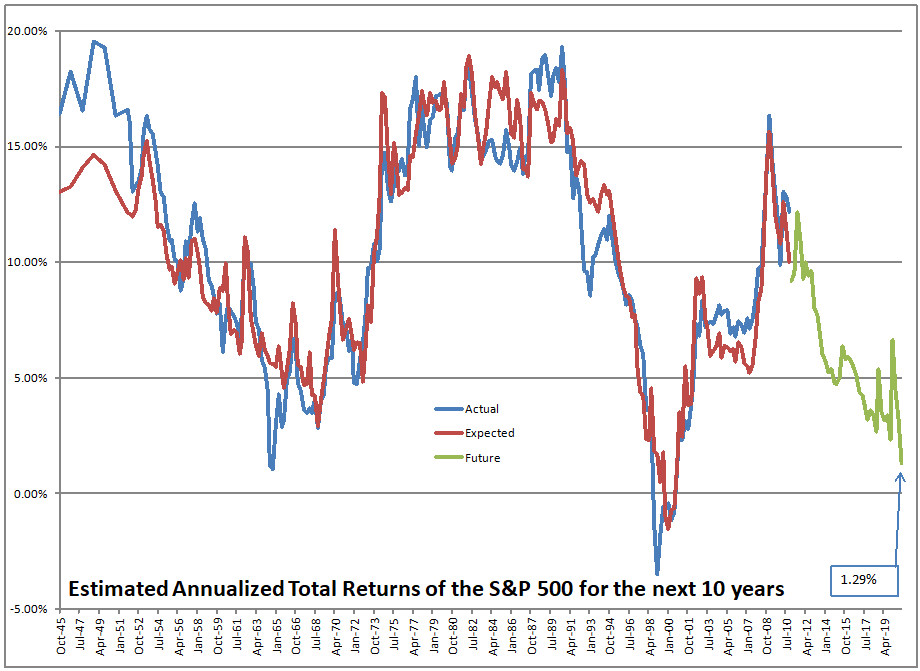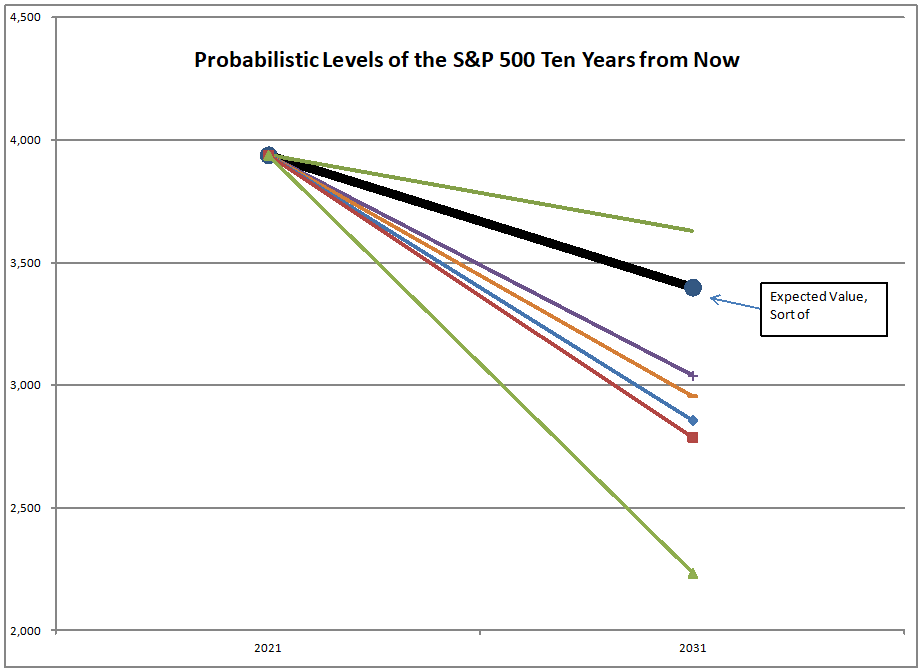Welcome to Blunderland, boys and girls. At the end of the fourth quarter, the S&P 500 was priced to return 1.29%/yr for the next ten years, with no adjustment for inflation. You might say, “But David, you’ve reported levels that low in the past, and you were concerned, but you never said ‘Blunderland.’”
Q4 2020 hedge fund letters, conferences and more
True, but the market has rallied further since the end of the quarter, and the level of the S&P 500 now is priced to return 0.54%/yr for the next ten years, with no adjustment for inflation. That’s in the 98th percentile of valuations. Another reason I didn’t say ‘Blunderland’ in the past was that we did not have a situation before where the only values comparable came from core of the the dot-com bubble. Thus, welcome to Blunderland.
Now, the valuation levels of the Blunderland era lasted for 2 years and 3 months, from the beginning of the fourth quarter of 1998 to the end of the fourth quarter of 2000. It was a period where monetary policy was extremely loose, before tightening enough to send the market into a tailspin, even as many claimed that interest rates have no effect on growth stocks.
Okay, I’m done imitating my last article on the topic. We are in the midst of a full-fledged mania. What is different no versus the dot-com bubble was that value only took off as the market began to implode. At present, value is outperforming even as valuations are at nosebleed levels. And for any who care, you would be better off buying a 10-year Treasury Note than buying the S&P 500 at present. There is an alternative… to lose less in purchasing power terms.
Of course, you could do what I did in mid-2000, and what I am doing now… own a bunch of cheap stocks that have been neglected over the last ten years, and hold them through the coming disaster. Many of them are cyclicals so they like inflation. Others are life insurers — they want long term interest rates to rise.
But will that be the path? Who can tell? And even with that path, I had gains in 2000 and 2001, and bruising losses in 2002, before rocketing out of it in 2003.
It will be different this time. It is always different. That said, valuations are very high. If you are wealthy and can pay on credit default swaps, no is the time to do it. If you are at the low end of the 1% like me, it is time to own more bonds and safer equities.
Yes, there are other possibilities. You could:
- Short SPY
- Buy puts on SPY
- Buy puts on HYG and JNK
- Short QQQ
- Buy puts on QQQ
You get the idea. If I were to do any of the above I would buy puts on HYG and JNK. I’m not doing that at present. This is the poor man’s way of paying on credit default swaps.
Yes, this is one of those rare times where you will lose is you own the broad market indexes like the S&P 500. note that the above is prices only, and does not include dividends. I think anyone invested in the S&P 500 will earn a tiny amount over the next ten years, and less than the ten-year Treasury Note or the CPI.
I can make this “advice” which is not investment advice in the technical sense simple: sell growth stocks and move to value. Sell stocks generally, and move to bonds.
Now I am not doing that. I am sticking with my cheap stocks with strong balance sheets, in industries that have lagged. And i have roughly 30% of my portfolio in investment grade bonds.
This is a good position to be in amid a mania. Maybe you should imitate me, lest you find that accidentally you became a financial maniac.
Article by David Merkel, The Aleph Blog


